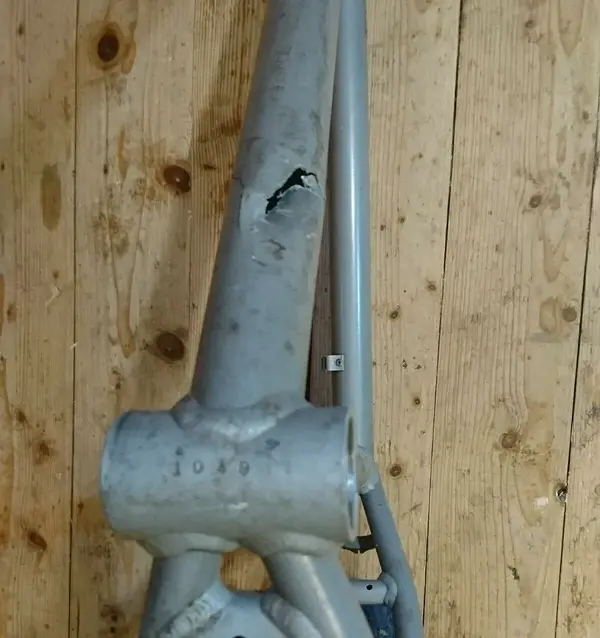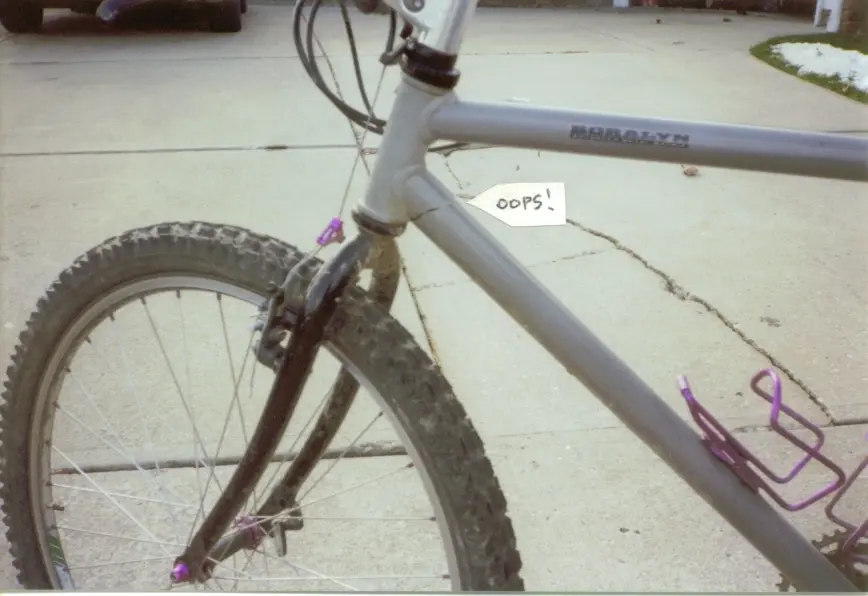MattiThundrrr
Kona Fan
Was originally called aluminum, later changed to aluminium. One certain rebellious country, and their little buddy next door continue to resist the indecisionIs it not supposed to be "aluminum"?
Was originally called aluminum, later changed to aluminium. One certain rebellious country, and their little buddy next door continue to resist the indecisionIs it not supposed to be "aluminum"?



Depends on whether or not the rider remembered to wd40 the hinges before popping on the lycraThat's a pretty big but a safe failure; at least it was at the rear end, must have creaked / moaned prior, and did not feel right before retiring it.
That looks absolutely deadly....
6 months at the workshop in 2010 it was:
Titanium track bike being used as a commuter - spiral cracks along the seat and head tubes
Carbon road bike fell against a lamp post - top tube split right round like an egg
Recall for most of that year's Specialized full suspension - shock mounts shearing off
Most common was YouTube failures - people trying to emulate videos, pretty much destroying their Konas yet expecting warranty replacements
Historically, the early burly 7005 aluminum frames all suffered the same issues: the forging process didn't get rid of the granular structures in the aluminium tubing. This led to multiple failures at the head tubes, especially when headset cups were not always the exact size or the tubes prepared in the right way. This left many cheap to expensive frames failing, some even simply going pop in front of the owner at a retrobike meeting! Manitou being the most infamous but most early Fisher would have the familiar 'lighting strike' crack in the head tube as it followed the grain structure
Welding has been discussed so many times - the most important part being the weld penetration. A lot of arguments then ensued about the look of a weld, missing the point entirely that as as long as the weld has been done correctly, looks are not as important. With aluminium, the structure changes with the type of material. 7000 series has different properties to 6000 and needs to be treated accordingly. When you weld aluminum, you have the tubing of one type which is then joined buy a rod of a completely different type of material but once through the stress of the welding process, ends up as near to the original tubing characteristics as possible
Get that wrong and you'll have your joints failing like a 3am rollup
The same 'Olympic' frame builder that taught me all the above (which I've no doubt got wrong) also explained that titanium had similar issues with the heat and stresses of the welding process changing the physical structure at the joins. So the welding had to be done to strict proven methods and standards
If I also remember correctly, decent welds for all materials can often be stronger than the tubeset
Back to frame failures - exotic American frames imported into the damp UK often rotted from the inside out, many shown on this forum
And don't rely on those expensive brand names being micron accurate for their headset cups - they are not!
Overlong forks ripping headtubes off - horrible!
Front end collisions, have seen many a decent frame ended like that..
"must be careful not in the Innyou can normally see the penetration from the backside
I are looking straight at it whilst doing it, you'll go blind.........."must be careful not in the Inn
must be careful not in the Inn
must be careful not in the Inn
must be careful not in the Inn"